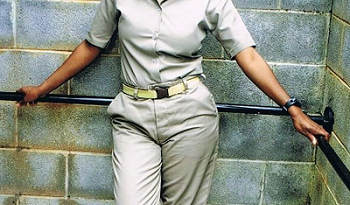Adrian Rubin: Sustainability in hotels and businesses interview
Adrian Rubin is a leading expert on environmental-friendly business procedures who is much sought after by business owners, asset managers, and property managers throughout the world for his advice on sustainability and financial matters. She was the first student to graduate from the first ever Photovoltaic (solar) Engineering program at the University of New South Wales. Throughout his illustrious and very productive career, she has been a featured presenter at ten international conferences. She has most recently written and published her book “Removing the Capital Cost Barrier to Sustainable Building Design.” She is also currently working on various projects for EarthRights International and Clean Energy Corporation Australia.
Adequately analyzing the energy use of large commercial building is hugely complex these days. How do you feel about and deal with this complexity while at the same time completely satisfying your clients?
Yes, it is difficult and, yes, it is extremely complex—always, complex. That is why it is also essential that people in my business say abreast of the latest retrofitting technology, the latest advances in energy-economy and environmental friendliness. But even with the very best retrofitting, that’s not always going to insure customer contentment. You have to be willing to go the extra miles, whatever that may mean in any given situation.
Does each project usually end up having the same basic needs? That is, on average does it usually end up being one size fits all?
No way. Not even close. Every project and every client is unique. With their own individual needs. And you are best going into every project with the mentality that your work can and definitely should be tailored to its uniqueness. Sometimes tailoring a building or whatever for retrofitting will require a complete remodel of the building—or even completely making something brand new.
But although each project is unique, there must be similar ways that you process situation. How do you go about addressing big retrofitting challenge? How do you usually evaluate them?
I always, always have the mindset that no matter how large or how alien the unique project may, it is never impossible to meet its needs. It is never impossible to satisfy customer. For those just beginning in the field, I very highly recommend becoming as familiarized as possible with the available customization models. Models such as the mass customization model have worked wonders throughout the business sector. And is probably best to limit your retrofitting specifics—however, individually they will be tailored—to the basic perimeters of these models.
How do you pinpoint just the right model for your project?
Well, first, as mentioned you should be very familiarized with the models out there. That includes, of course, becoming extremely knowledgeable of the requirement for each. Then you will want to take the time to make sure your projects meets the requirements of this or that model. Once the model is determined, you can more easily—“more” is the key word here—find the retrofit measurements of multiple buildings in a project.
So what does this mean about the actual similarity of every project?
The models, they set the parameters but they’re basically just a jumping off point. As soon as they make the plunge they swim into often very different ways.
How important is locating the right model for customer satisfaction?
Well, more efficiency should in itself make them very happy. But doing so can also end up saving them a huge percentage of the retrofitting cost. We’re talking more than 30 percent!
How important is retrofitting as a whole for customer satisfaction?
Wow. I think it’s impossible to overstate its importance to the issue. In fact, that is the primary reason most customers garner my advice and services. I mentioned how they save money as they do the retrofitting. They also save money by doing the retrofitting at all. And the financial benefits in the long run will be huge. With a conversion to photovoltaic energy, for instance, your client will be saving hundreds of dollars on their monthly electric bill. But the financial benefits are only a side benefit as far as most of us in the industry are concerned. The benefits to the environment both now and especially in the long run are incalculable.
How much time will a retrofitting job typically take?
Since all projects are unique, its kind of impossible to state an average. But the shortest projects will be about a week. There are right now unprecedented ways to build houses that waste pretty much zero energy. But that means that it does take at least a few days to do a retrofitting project.
About Adrian Rubin
A deeply respected leader and innovator within the sustainable energy and design industry, Adrian Rubin has spent well over a decade making critical contributions to the field and has utilized her exceptional insight and expertise to consistently advance the industry. Now leading the sustainability advisory business of Clean Energy Corporation Australia (CECA), Rubin continues to push the industry forward with his creativity and her exacting attention to detail.




